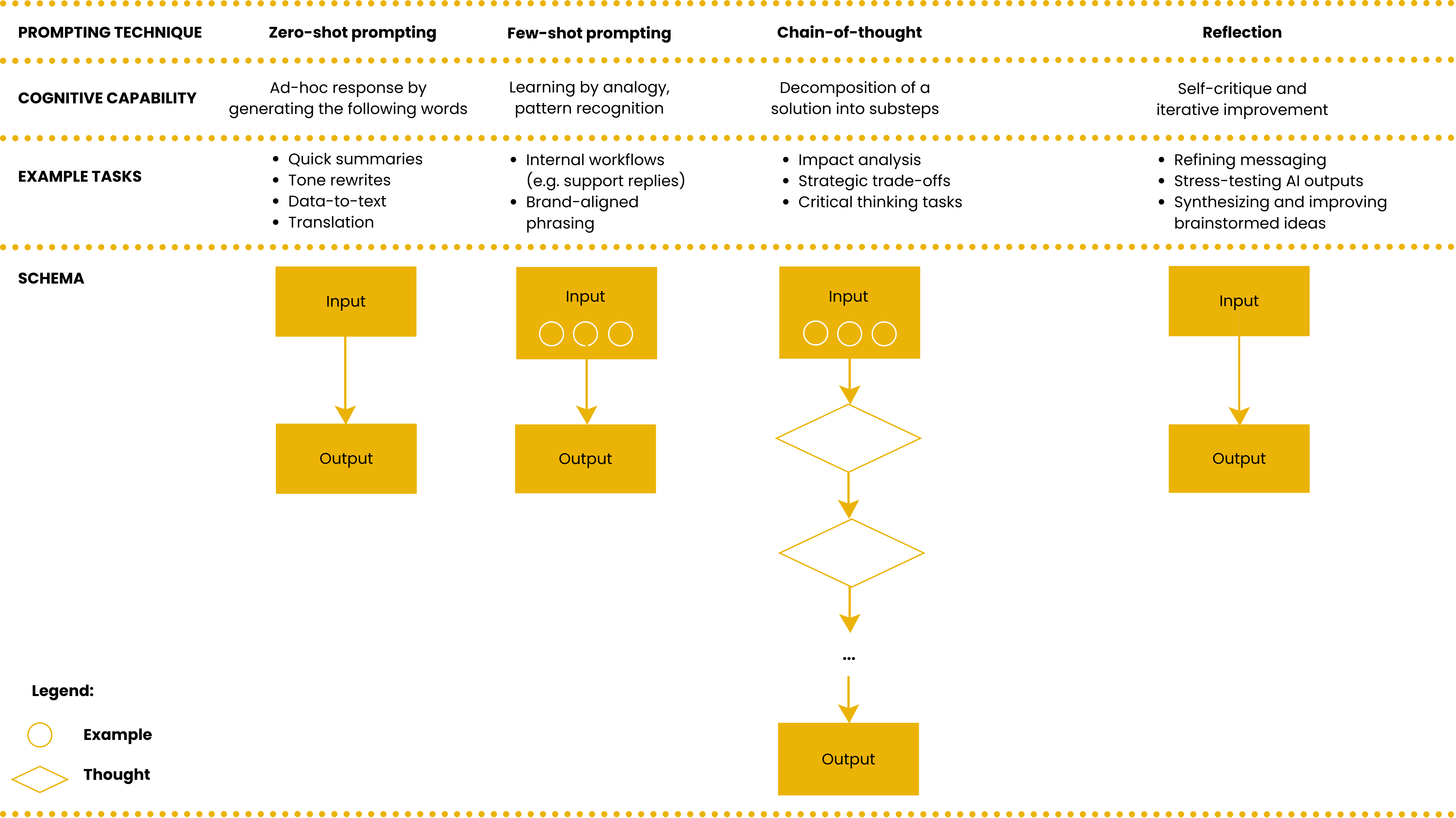LLM Prompting Techniques
The LLM Prompting Techniques provide a structured approach to interacting with AI systems by leveraging four foundational techniques that map to human cognitive capabilities. Each technique offers distinct advantages for different use cases, from simple direct instructions to complex reasoning tasks.

Principles
Match your prompting technique to the complexity of your task and desired output quality.
Use zero-shot for simple, straightforward tasks where speed matters more than precision.
Apply few-shot prompting when you need the AI to follow specific patterns or styles.
Implement chain-of-thought for complex reasoning tasks that benefit from step-by-step analysis.
Leverage reflection to iteratively improve outputs through self-critique and refinement.
Implementation steps
1Assess task requirements
Evaluate the complexity, precision requirements, and nature of your task. Consider whether you need quick results (zero-shot), pattern matching (few-shot), complex reasoning (chain-of-thought), or iterative improvement (reflection).
2Select the appropriate technique
Choose the prompting technique that best aligns with your task requirements:
- Zero-shot: Direct instructions for simple tasks
- Few-shot: Example-based guidance for pattern matching
- Chain-of-thought: Step-by-step reasoning for complex problems
- Reflection: Iterative self-critique for refinement
3Structure your prompt
Format your prompt according to the chosen technique:
- Zero-shot: Clear, specific instructions with role, audience, format, and tone
- Few-shot: Consistent examples that demonstrate the desired pattern
- Chain-of-thought: Explicit reasoning steps or a request to 'think step-by-step'
- Reflection: Criteria for self-evaluation and improvement
4Ground your prompt
Add contextual information, incl. files and documents, to tailor the response to your specific situation and reduce hallucination and creativity on the part of the model.
5Iterate and refine
Evaluate the model's response and refine your approach as needed. Consider combining techniques for complex tasks, such as starting with few-shot, applying chain-of-thought, and finishing with reflection.
Examples
A marketing team uses zero-shot prompting for quick headline rewrites, few-shot prompting for brand-aligned product descriptions, chain-of-thought for campaign strategy analysis, and reflection for refining sensitive customer communications.
A product manager applies chain-of-thought prompting to evaluate feature trade-offs, asking the AI to analyze user impact, development cost, and strategic alignment before making recommendations.
A content creator uses few-shot prompting with 3 examples of their writing style to help the AI generate consistent blog posts that match their voice and tone.
Anti-patterns
Using zero-shot prompting for complex strategic decisions that require nuanced reasoning.
Providing inconsistent or poorly structured examples in few-shot prompting, confusing the AI about the pattern to follow.
Skipping explicit reasoning steps in chain-of-thought prompting for critical decisions.
Giving vague reflection criteria without specific aspects to evaluate and improve.
Resources
- Prompt Engineering in Practice(book by Richard Davies)
- Prompt Engineering Guide(Documentation)
- Prompting Made Simple(Newsletter episode)
- Prompt engineering(Tutorial by OpenAI)